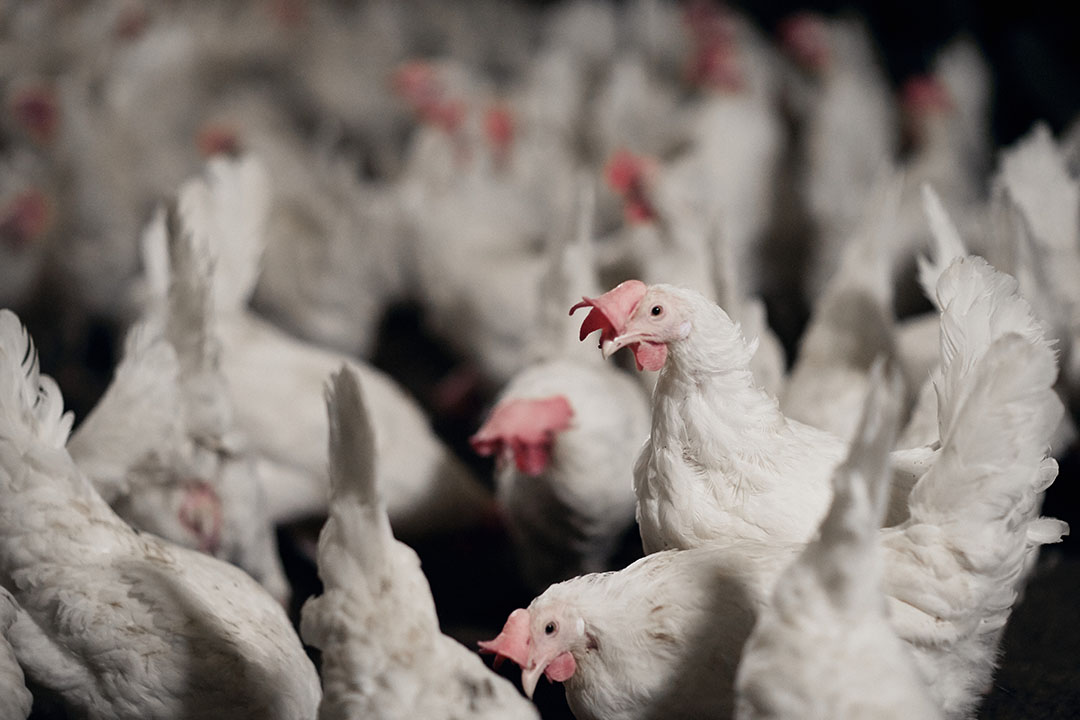Cold stress: Feed utilisation and performance in broilers

Cold stress adversely affects the run of the digestive and metabolic processes and other biological functions in chickens.
This may occur to a varying extent depending on factors such as:
- breed
- age
- weight
- feathering
- humidity
- airflow
- exposure time
In most cases, however, chickens under cold stress conditions often exhibit reduced performance and impaired health due to changes in the internal body systems. The following is a review of these effects and the ways of keeping them at minimum levels.
Feed intake
In one study, broiler chickens were exposed to cold stress using cold air conditioning for 8 hours daily from the 3rd week to the 6th week of age. Average feed intake (g/bird) was 3,407 in cold-stressed birds compared to 3,082 for the control group at normal temperature, with the average body weight remaining constant at 1,340 grams in both groups.
In another study with male chickens obtained from a commercial strain of broiler breeders, cold stress has increased feed intake (4,131 g/bird compared to 3,904 g/bird in the control group) while decreasing body weight at 6 weeks of age (2,260 and 2,300 grams in low and normal temperatures, respectively).
The decreased feed utilisation for growth may be attributed to 1 or more of the following factors:
- Enzyme levels are affected by cold, which results in reduced efficiency of feed digestion and utilization for growth and other body functions.
- Chickens often shiver when exposed to cold stress. The shivering is an energy-demanding process requiring a higher feed intake for coping with the accelerated metabolic rate instead of serving other useful production purposes.
- The passage rate of feed is accelerated under low temperature due to the increased peristalsis of crop and oesophagus caused by changes in the nervous and endocrine systems, thereby allowing insufficient time for the enzymes to act on feed digestion and utilisation.
- Under cold stress conditions, there is an increased level of CCO enzyme (Cytochrome C Oxidase) in the liver mitochondria, which is an indicator of inefficient energy utilisation, as it acts on inhibiting both cellular oxygen utilisation and ATP production.
- Exposure to cold stress results in changes in some genes involved in fat metabolism in broilers pituitary, suggesting that cold stress can affect fat metabolism and deposition in the body, thereby affecting the overall body mass at a given feed intake.
A broilers intestinal ecosystem
The cold stress increases the pH of jejunum and caecum content, which favours the multiplication of C. perfringens, the major aetiological agent of necrotic enteritis. Necrotic enteritis is described as a disease with a high economic impact on the health and welfare of broilers. It also leads to haemorrhage and epithelial damage in the intestinal mucosa with resulting villous atrophy which reduces nutrient absorption and growth of chickens. The intestinal damage also results in the release of plasma proteins into the lumen of the intestinal tract. This can provide a necessary growth substrate for the extensive proliferation of Eimeria and coccidial species which, in combination with C. perfringens, can lead to various clinical signs such as mucus-like or bloody diarrhoea, dehydration, anaemia, listlessness, ruffled feathers, and stunted growth, with a mortality percentage of 50% or more.
Broiler immunity
During cold stress, a substantial amount of energy is diverted from immune functions to thermoregulation. Thus, immunosuppression will ensue to compensate for heat production. Besides, cold stress affects the function of the hypothalamic-pituitary axis, which results in the alteration of serum adrenal and thyroid hormone levels. As these hormones have immune-modulating effects, changes in their levels may affect the immune system either directly or indirectly. When a chicken’s immune system is suppressed, it can’t fight off harmful pathogens or keep parasite level in balance. Cold stress also leads to oxidative damage to different organ tissues when the anti-oxidation is out of balance.
Poultry carcass quality
Only a few studies have reported a decreased dressing percentage in cold-stressed chickens (69%) compared to those kept under normal temperature (73%) with darker colour carcasses arising from the lower glycogen concentration in muscles of cold-stressed chickens. In other studies, however, no such effects have been observed under cold stress conditions.
Control of cold stress
- Brooding management: There should be a sufficient number of brooders/ heaters that commensurate with the flock size of the chickens, with the temperature to be regularly monitored and carefully adjusted to suit the heat requirement of chickens at different stages of the production cycle.
- Control of airflow: Side curtains should always be installed in winter to prevent heat dissipation through the circulation of air to and from the poultry house. Plastic curtains are commonly used for this purpose.
- Protein nutrition: Cold stress increases the need for protein in the diet. This is first because protein generates heat when it is digested, thus creating body heat that helps the chickens to stay warm. Secondly, the feathers that cover the chick’s body and protect it from cold is made of about 85% protein. These two reasons should prompt the incorporation of an adequate amount of protein in the diet. However, if the intestinal tract is infected with pathogens under cold conditions, then feeding a low-protein diet may be recommended as it reduces the severity of the infection and also reduces the ammonia load, thereby decreasing gut disorders. It should be noted though that the reduced heat increment resulting from the lower protein level will, in this case, place more pressure on providing adequate heat facilities.
- Mineral adjustment: Using lower calcium, phosphorus, and sodium levels in cold weather will reduce water intake, water excretion, and litter moisture, thereby mitigating the cold stress effects and also maintain footpad quality. Too much of a decrease can, however, impact performance.











